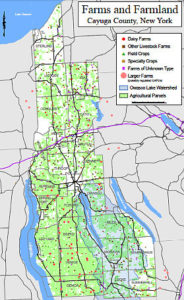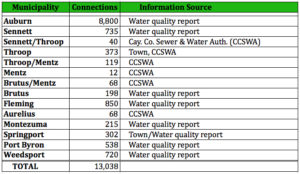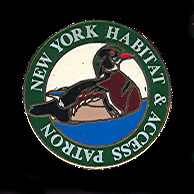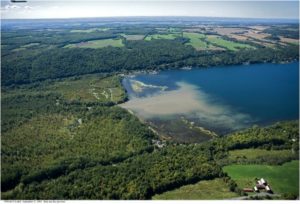For the past year, citizens, farmers, and legislators in Cayuga County have been building a shared understanding of the impacts manure management has on the water quality of our streams and lakes. The work has taken place within the Advisory Committee to the Cayuga County Manure Management Working Group , led by Cayuga County Legislators Keith Batman and Michael Didio. Half the group is made up of farmers, probably the single-most influential stake holder in any local, regional, or state level discussion bearing on agricultural policy.
, led by Cayuga County Legislators Keith Batman and Michael Didio. Half the group is made up of farmers, probably the single-most influential stake holder in any local, regional, or state level discussion bearing on agricultural policy.

Milk production is on the rise in New York State, driven in part by the yogurt craze. Dairy yields have been increasing and more farmers are interested in getting into the market. Mid-size farms have been pushing for ag policy reform, and that helps explain the State’s current effort to redraft nutrient management regulations. Cayuga County has quite a few dairy farms, and they house lots of cows; hence the County’s interest to get ahead of the regulatory reform curve. And like most of the dairy farms in NYS those in our county have been following the lead of their lobbying organizations to keep their operations in order and not make any manure related mistakes.
I’m not a dairy farmer or a lake-front property owner. Nor do I live in the watershed surrounding the Owasco Lake water I use at my home. But like many of my urban and suburban neighbors, I am a water-user stakeholder very invested in the successful and sustainable use and care of Owasco Lake. And as a water-user stakeholder, I depend on my local government representatives to saddle up and take on the difficult challenges of making good on the amazing promise our plentiful but fragile surface waters in the Finger Lakes.
Typically understood, stakeholders in watershed management discussions include the key land owners of the working landscape: farm and forest owners. In the Finger Lakes the list of stakeholders also tends to include lake-front owners, and increasingly, urban areas and the many departments of health that are tagged with ensuring safe drinking water. Why not include water-users as direct stakeholders?
The Cayuga County Manure Management Working Group presented their recommendations last month, and I asked them to create a funding source for watershed stewardship supported by voluntary donations from water users. By introducing the Owasco Lake Watershed Stewardship Fund concept, I’m calling upon the connection we urban and suburban water users have with the lands and waters of the Owasco Lake ecosystem.
By my count there are about 13,000 paying water users dependent on Owasco Lake. These are residential, commercial, and industrial users, and live in the following municipalities:

As a resident of the single largest Owasco Lake water using municipality, I am hoping the City of Auburn will consider taking an extra leadership role and create a voluntary Owasco Lake Watershed Stewardship Fund to support key watershed conservation efforts in the Owasco Lake Watershed.
Watershed management in the Owasco Lake watershed has come a long way, but many significant private and public stewardship challenges remain unaddressed, particularly the placing of key stream corridors into wide, permanent, multi-vegetation buffer strips that can reduce nutrient loading in Owasco Lake. The Fund I propose will broaden the category and number of stakeholders involved in the voluntary, long-term stewardship of the Owasco Lake Watershed by directly involving water consumers in supporting the creation and monitoring of buffer strips in the Owasco Lake Watershed.

I bought my first Habitat Stamp the first year DEC offered the option, and they sent me a cool pin.
What I’m after is a chance to add to a Stewardship fund every time I get my water bill. Everyone has the experience of donating money at the check-out counter for an important cause. From children’s’ health care and research to pet care, many stores solicit donations. Public agencies do too: the New York State Department of Environmental Conservation offers everyone the opportunity to donate $5.00 to get a “Habitat Stamp” and help underwrite conservation efforts everywhere in the State. Of course not every hunter or fisher buys a Habitat Stamp – and after all, the excise taxes sportsmen and women pay for their licenses, guns, poles, and ammo already pay for state and federal conservation and land acquisition – but the money from the Habitat Stamp does provide additional funding for habitat restoration projects around the state.
Wouldn’t it be great if we water users of the Owasco Lake created a Stewardship Fund to offset the costs of establishing robust, perennial vegetation buffer strips in the Watershed? It could go a long toward helping farmers prevent nutrient run-off. And right now, the stakes are higher than ever.
Almost all Cayuga County farm land is drained with tiles. Much of this drainage infrastructure has been in place for a long time, and over the years has helped Cayuga County farms prosper. But this success has a price: the farm drainage network serves as a nutrient highway that can carry soil and animal nutrients directly into streams and lakes. And since the Feds began super–subsidizing corn production farmers have been clearing natural stream buffers, filling wetlands, and growing crops year–in and year–out, with no rotation or fallow time.
Add to this the impacts climate change is wrecking on Finger Lakes’ soils. Cornell University reports that there has been a “67% increase in the number of 2-inch rainfall events occurring over a 48-hour period since the 1950s” (link to Cornell’s summary here) and that “[m]ore rain, coming in sustained heavy downpours, heightens the danger of localized flash flooding, streambank erosion, and storm damage”. Bill Hecht has pointed out in numerous forums how the unsustainable synergy of poor land use and big storms renders Confined Animal Feeding Operation (CAFO) Nutrient Management Plans, Farm Plans, and farm practice guidelines obsolete. Mr. Hecht has documented the consequences of rapid agricultural run–off on Cayuga County surface waters, how fast and furiously the streams turn brown.

Sediment flowing out of the mouth of the Owasco River, principle tributary to Owasco Lake. Bill notes: “a close examination of the removal of wetlands, field buffers and miles of drain tiles tells me that we are removing too much water too fast off these fields. It has to stop. Lowland buffers that I never thought would be removed have been cleared.”

Bill Hecht’s photo of sediment flowing out of the mouth of Yawger’s Creek, tributary to Cayuga Lake. “It has been my observation over 50 years, that the guidelines were never sufficient. I have lived at the mouth of Yawger’s Creek for over 50 years and with virtually any rainstorm it turns brown immediately where in years past it could be days.”
Clearly this is a serious problem for all our Finger Lakes.
From my point of view, the Owasco Lake Watershed Stewardship Fund would be a public source of watershed land conservation dollars created through voluntary donations from the consumers of Owasco Lake water. Farm landowners interested in establishing stream buffers in stream corridors on their property would be eligible to access the dollars pooled through this funding stream to address:
- The direct costs of identifying initial, critically needed stream buffers in the Owasco Lake Watershed where voluntary landowner interest exits;
- The direct costs of establishing and monitoring stream buffers on priority stream corridors in the Owasco Lake Watershed;
- The underwriting of indirect costs to landowners who remove productive farm land that is placed into stream buffer use; and,
- Regional and state-wide education efforts to explain and describe the many water quality benefits this particular approach has in protecting Owasco Lake water quality.
Preventing nutrient run-off to streams by growing a buffer strip along side is not new, but many farmers do not establish them because it removes some land from productive use. That’s an opportunity cost. If the land is not farmed but remains taxed, then it is an extra operating cost. Finally, even when farmers install buffers – and some do – there are costs in establishing them. Buffer strips done right have multiple zones of increasingly dense, deeply rooted, and permanent vegetation the closer you get to the stream; and these require even more land and considerable time and plant material to get started.
Turns out most Finger Lakes farmers are not eligible for the additional cost sharing dollars that are used elsewhere to protect vulnerable stream corridors. Farmers in the Skaneateles Lake and Catskill reservoir watersheds have extra monies available to cover costs, but these monies are not available in our watershed. So to avoid a purely regulatory solution we need to create an additional funding source and an administrative framework to help landowners protect key streams.
Funds generated through this effort ought to be administered through an effort similar to the approach behind and within the Advisory Committee to the Cayuga County Manure Management Working Group. The Working Group is multi-jurisdictional, interdisciplinary, represents key stakeholder interests in the Watershed, and recognizes the importance of incorporating scientific information in public policy dialogues devoted to protecting this vital Finger Lake and needed regional public drinking water supply.
The Owasco Lake Watershed is a geographic entity, not a taxing authority. However, the many municipalities whose citizen water users do depend on Owasco Lake water quality have the legal capability to create this fund. Once the City of Auburn initiates the collection of dollars voluntarily donated through water billing solicitation other municipalities can join in.
